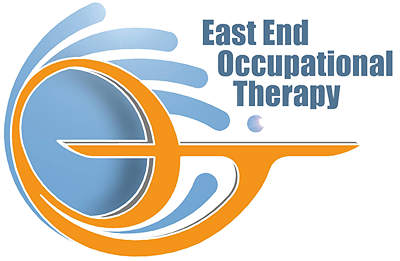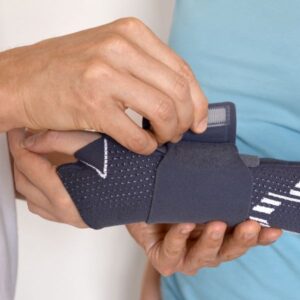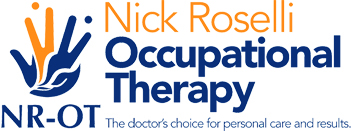A splint is a supportive device that can be used for several different purposes. Splinting is not a new technique; in fact, it dates back to 1500 BC. Their most common use is to provide support for fractured bones and injured joints. They are appropriately fitted so that they alleviate pain and help to increase movement. East End Occupational Therapy provides custom splinting in Nassau County so that you can heal properly and feel like new again. For more information on scheduling an appointment with Dr. Anthony Marullo or another member of our practice, please click here.
What is a splint used for treatment?
A splint is a flexible or rigid device used to protect and support broken or injured bones and joints. They are also used to immobilize the injured limb and stabilize it to keep it in place to heal correctly and prevent further damage. Splints provide less support than a cast would, but they help you recover faster and are easier to use. It can be used for several days to several weeks, depending on the severity of the injury. There are many ready-made splints that you can buy in a store; however, a customized splint may be required to fully heal in certain situations. Some of the most common uses of a splint are:
- Post-operative care
- Stabilization
- Immobilization
- Support
- Transportation
Casts vs. Splints
When most people think of fixing a broken bone, they think of a cast; however, a splint can often help the bone or joint heal much better than a cast can. A cast wraps all around the injury and is made with either plaster or fiberglass. Each case is customized for the injured individual. On the other hand, the hard part of a splint does not wrap around an injury. It is held in place by an elastic bandage or a similar material. A doctor can only remove casts, but splints can easily be removed or adjusted without a medical professional’s help. Like casts, splints can also be customized, and in many cases, that is the best option; however, they are also sold without customization in many different shapes and sizes.
Common injuries that require splints

While splints are most often used to help bone fractures, there are several different uses for them. Some of the injuries and conditions that splints can be used for include:
- Arthritis
- Wrist, elbow, and finger fractures
- Nerve injuries
- Tendon injuries
- Nerve compressions
- Dislocations
Custom vs. Over-The-Counter Splints
It is widespread to find splints in a variety of sizes in a drugstore. Many people turn to over-the-counter splints because they are cheaper; however, it may not be the best option in the end. Many over-the-counter splints are created in very basic sizes with a “one size fits all” approach. Each injury and body is different, so custom splints usually lead to a better healing process.
How to care for a splint
When you are given a splint to help with an injury, it is crucial to know how to properly take care of it. Without proper care, you can damage the splint and hinder the healing process. If you are using a splint, it is essential to follow these tips to ensure the best results possible:
- Always keep splints dry; if it gets wet, you can dry it with a hairdryer on a cool setting
- Avoid placing pressure on splints
- When taking a shower or bath, remove your splint or cover it with a plastic bag.
- Don’t use sharp objects to scratch itches under your cast or splint.
- Always keep splint clean and away from dirt
- Elevated the part your body that is in the splint to avoid any swelling
East End Occupational Therapy – Custom Splinting in Nassau County
A fracture or injury is a burden that some of us have to deal with from time to time; however, splints can significantly help the healing process. At East End Occupational Therapy, we want to provide you with the best care and techniques for treating your condition by alleviating any pain or discomfort. We strive to make you as comfortable as possible and feel like you are at home. Our experienced, well-trained staff can provide their expert insight on any concerns you may be facing. We can also provide custom splints that will increase the stability in an unstable joint and increase your range of motion. If you need a custom splint, don’t hesitate to contact East End Occupational Therapy for custom splinting in Nassau County or visit our website.





